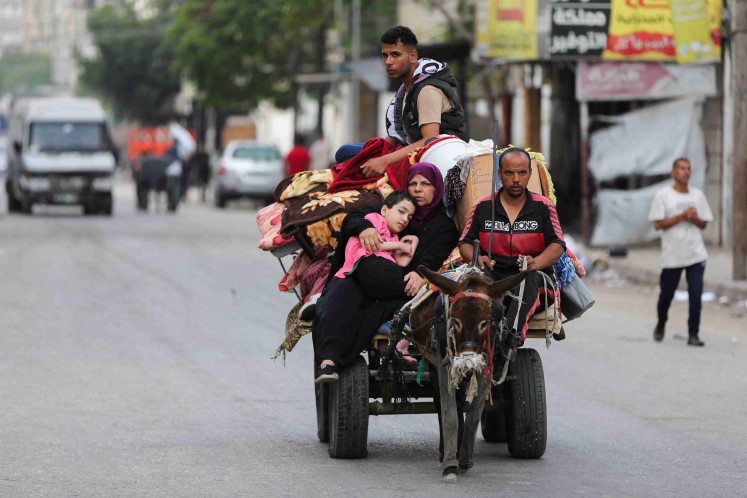Superblocks need govt oversight
The government should bring the rapid development of Jakarta's "superblocks" under control, lest they further deteriorate the already chaotic city, urban observers say
Change Size

The government should bring the rapid development of Jakarta's "superblocks" under control, lest they further deteriorate the already chaotic city, urban observers say.
Ridwan Kamil of Urbane Indonesia said Saturday the city still lacked strict regulations and well-prepared infrastructure such as public transportation and pedestrian walkways to support the superblocks.
"Basically, the development of superblocks is a positive thing in Jakarta, which has very poor access to mobility, because a superblock puts together several different functions in one spot," he said.
"Unfortunately, the city's infrastructure, including public transportation, pedestrian walkways, road, water, power and telecommunications services are not yet ready to support the superblocks' development."
He was speaking at a panel discussion on the problems of large-scale developments at the private Tarumanegara University in West Jakarta.
Also a speaker in the discussion, university chairman of the urban and regional planning program Ing Jo Santoso said, "Without infrastructure improvement, any kind of development in the city will be stuck."
Superblocks, first developed in the capital in the 1960s in Senen, Central Jakarta, and Ancol, North Jakarta, are defined as a massive building or group of buildings offering multiple, related services.
Ridwan, however, pointed out that stakeholders still differed in defining the term. "It is often confused with mixed-use development."
According to him, a superblock refers to an area of at least 4 to 5 hectares where several buildings offer different functions, while a mixed-use development, or "hyper development", is one massive building offering several services on at least 2 hectares of land.
Today's superblocks in Jakarta include Sudirman Central Business District, Mega Kuningan and Mega Kemayoran, he said.
Sarwo Handayani, Governor Fauzi Bowo's assistant for city development, stated in her paper made for the discussion that the details of superblock development were currently still dominated by property developers.
She also said the current stick-and-carrot method was not fully effective in controlling superblock development.
Ridwan, also a member of the city architecture adviser team, said his group was toothless because it could only provide comments on the construction designs it checked.
"Most designs brought to us are already approved by the spatial planning agency and other relevant agencies like the transportation agency. It is hard to overturn the approval."
Andy Simarmata of the Indonesian Planning Experts Association said he regretted the government's slow reaction in making new regulations to address the problems of rapid development.
Support for stricter spatial planning bylaws also came from the developers.
"Developers aim to gain the most profit. If it is feasible for a business to pay the penalty for certain violations we will pay it, unless there are clear, consistent and fair regulations that do not allow the practice," said Artadinata Jangkar of the Indonesian Real Estate Developers Association.









